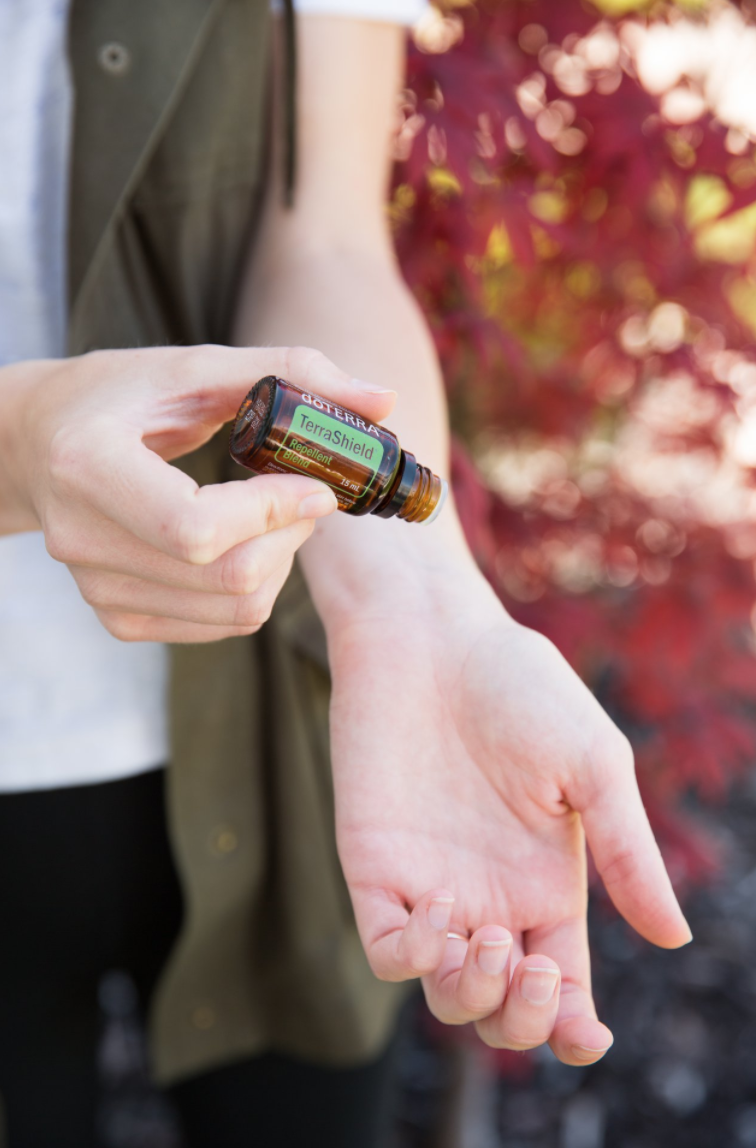What are essential oils?
Essential oils are compounds found in the seeds, bark, stems, roots, flowers, and other
parts of plants. They have long been used for food preparation, beauty treatment, and health care practices. My family uses doTERRA Essentials Oils because they are thoroughly tested using the strict CPTG Certified Pure Therapeutic Grade® quality protocol. They are wonderful to add to your holistic health lifestyle because they are safe for the entire family and have virtually no side effects.
3 Ways to Use Essential Oils
Aromatically
The sense of smell is a tool that can elicit powerful physiologic, mental, and emotional responses. Essential oils are quickly absorbed by the smell receptors, which have a direct link to the limbic system by way of the olfactory nerve. The limbic system is part of the brain that supports a variety of functions including smell, emotions, behavior, and memory. For this reason, essential oils have
an especially powerful effect via aromatic application. Some essential oils induce uplifting or invigorating effects, while others are more calming.
Ways to aromatically use essential oils:
• Rubbing on hands and smelling
• Making a spray bottle
Topical
Topical application is a very effective method for applying essential oils. Because essential oils have low molecular weights and are lipid soluble, they easily penetrate the skin. Once absorbed, they stay in the applied area for a localized benefit.
Although essential oils are readily absorbed, there are many ways to increase absorption. Using a light massage will increase the blood flow to the area of application, in turn improving distribution throughout the body. Use of a carrier oil can also increase absorption, especially in skin that is dry or flaky as it helps moisturize the skin and slow evaporation of the oil. To decrease the likelihood of developing a skin sensitivity, especially on young or sensitive skin, it is advisable to use a carrier oil (such as fractionated coconut oil, almond oil, avocado oil, olive oil, jojoba oil, etc) to dilute more potent oils and when trying an oil for the first time. The recommended dilution ratio is typically one drop of essential oil to three drops of carrier oil. It’s always advisable to use several small doses
throughout the day rather than a single large dose. Start with the lowest possible dose (1–2 drops). A topical dose can be repeated every 4–6 hours as needed. Because every individual is unique, the dose will vary for each individual based on size, age, and overall health status.
Ways to topically use essential oils:
• Rub or roll onto areas of the body. Bottom of the feet is great for quick absorption. Cover with socks.
• Add to skin care products.
• Add to the bath. My favorite is adding a few drops to a small amount of epsom salt for extra detoxifying benefits.
Internal
Essential oil contributes many health benefits as well as flavoring and aroma properties to foods. When in their concentrated form, essential oils can be used as dietary supplements for more targeted and potent health benefits. Internal use is a very safe and effective method of application because of the sophisticated physiologic processes of our bodies. When ingested, essential oils directly enter the bloodstream via the gastrointestinal tract, where they are transported throughout the rest of the body. Essential oils are lipid soluble so they are readily transported to all organs of the body, including the brain. Then, like all things we consume, essential oils are metabolized by the liver and other organs and are then excreted. The composition of essential oils is highly complex. Each constituent possesses a unique set of biochemical properties that react with cells and organs in different ways. Although these mechanisms of action are not completely understood, the positive end results have been demonstrated. However, the body is only equipped to handle appropriate doses of essential oils. Proper dosing according to labeling recommendations and other professional guidelines should be strictly followed to avoid toxicity.
It is important to note, if consuming internally, the bottle should say Essential Oil Supplement.
Ways to internally use essential oils:
• Inside a veggie capsule
• Cooking or baking
• Adding to water, smoothies, tea.
Personally, in my home, we use essential oils as part of our wellness and prevention strategy, as my first line medicine cabinet with abnormal symptoms, as my natural perfume, in homemade household products, as a home deodorizer and freshener, and in skin care products.

